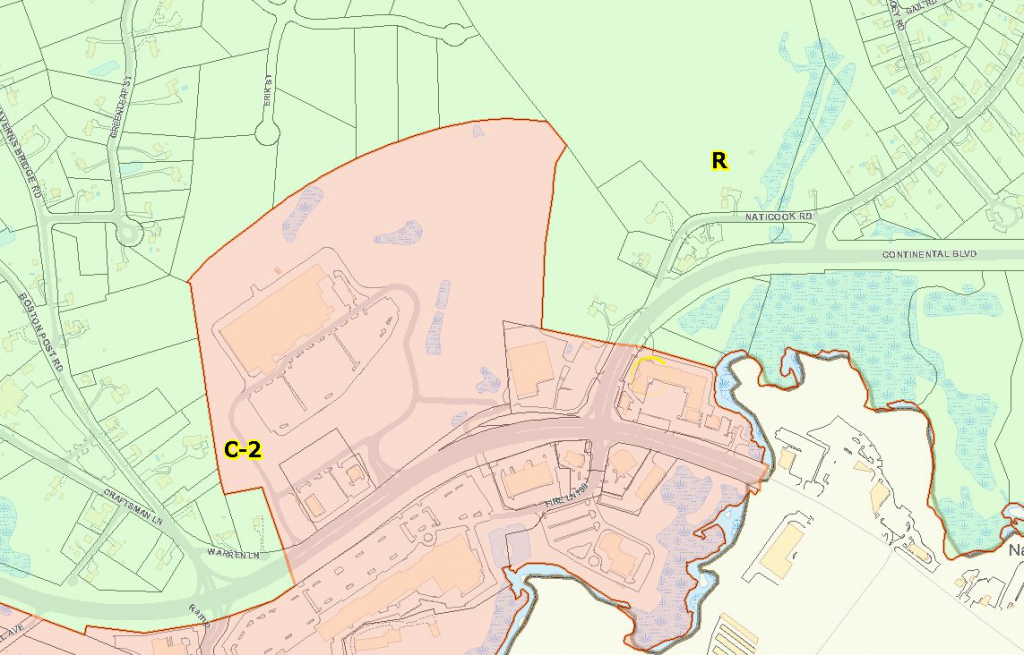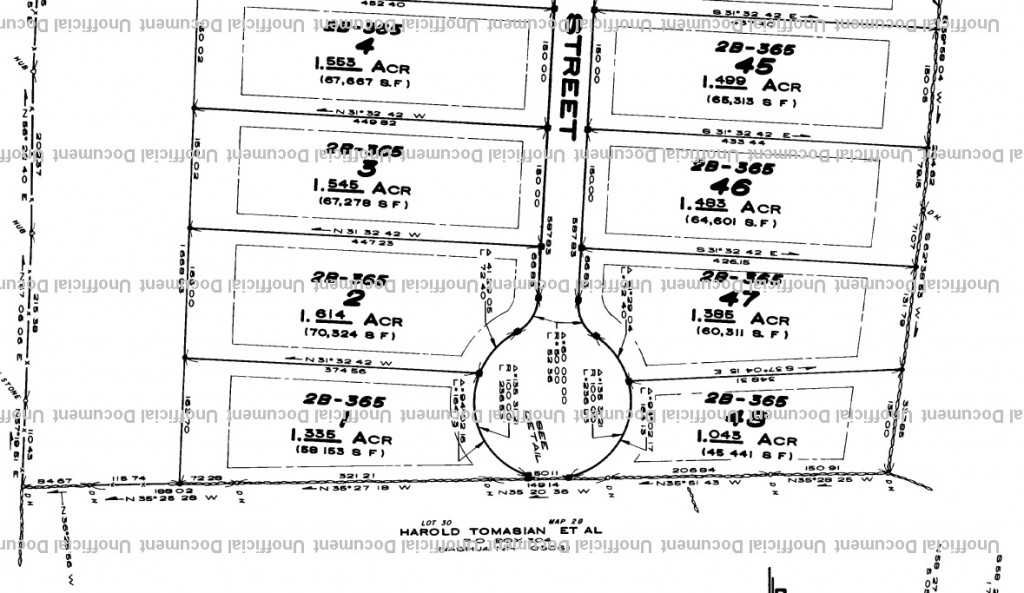As both a real estate agent and an appraiser, I look at the entire neighborhood, not just what’s next door. I can remember a property in Merrimack I was working on at the end of a cul-de-sac. Nice quiet neighborhood, but through my research you could see the subdivision ends with a couple large lots, one of which is zoned for commercial uses. It was just under 100 acres with frontage on a main route.

Here’s the GIS map with the zoning overlay of the area now. The R is residential, the C-2 is commercial area that was in place, but the large commercial building was built after.
Sure enough a few years later a large “box” store opened and you could definitely hear, and “see”, the noise through the neighbors yard. Can you imagine buying your new home on this quiet cul-de-sac, and then a few years later having this happen?
So here are a few ways you can find out for yourself (if I’m not your agent):
-
Google maps is the easiest first step. Zoom in, do the street view (little yellow man icon) and look around. Of course Google Earth is stunning, A 3D globe.
-
My favorite is using a GIS viewer you can usually find on a towns website. Do a search for GIS and the name of the town/municipal location. GIS stands for Geographic Information Systems and it is an overlay mapping system combing lots, zoning, wetlands, and all sorts of information. For more information about GIS mapping here’s my previous post on GIS maps in New Hampshire communities.
-
Online deeds and/or plans. Here in New Hampshire we have www.NHdeeds.com and you can look up your deed in most counties. From the deed you can get the subdivision plan # in many cases. Enter the plan # and you get the subdivision plans. Really great information!
My point is to look at the surrounding land, the uses. I can hear my clients say: “but Jenn, we don’t mind that…”
It could be the property is one street over from a major highway, a property with only 2-bedrooms, or industrial zoned land next door, they may not perceive it as a negative.
- Key Point:
- Do the majority of home buyers see it that way? I help my clients become informed, for the future marketability of the property.
What is the difference between a Superfund site and a Brownfield? Check out an earlier post: http://jennifercote.info/superfund-or-brownfield/
Just my thoughts. –Jennifer Cote- Everything Real Estate
Post Footer automatically generated by wp-posturl plugin for wordpress.

